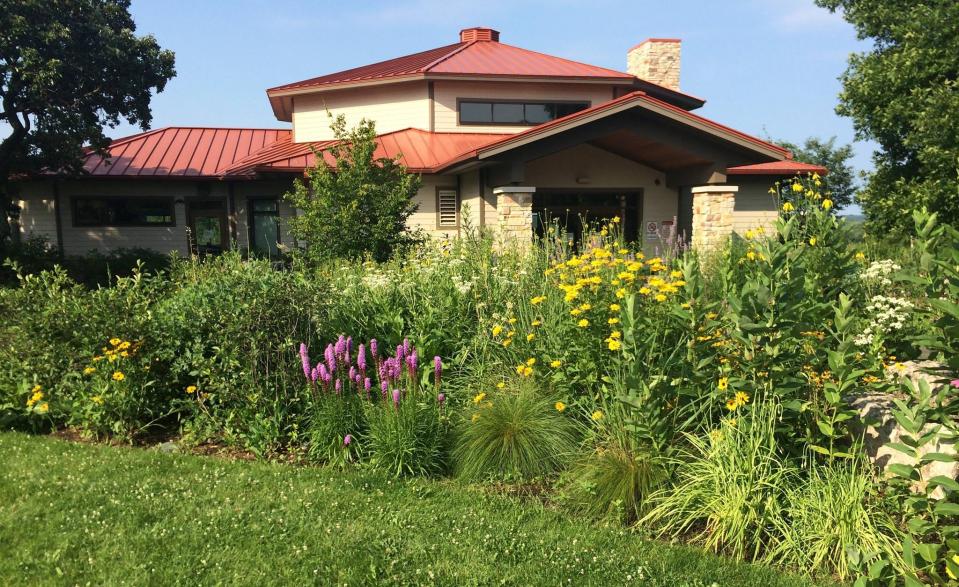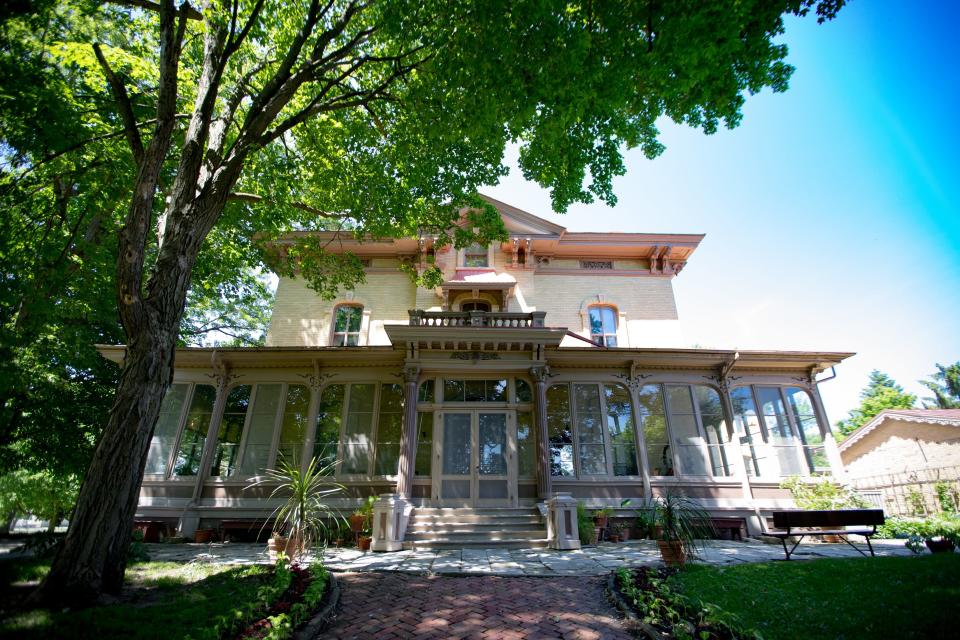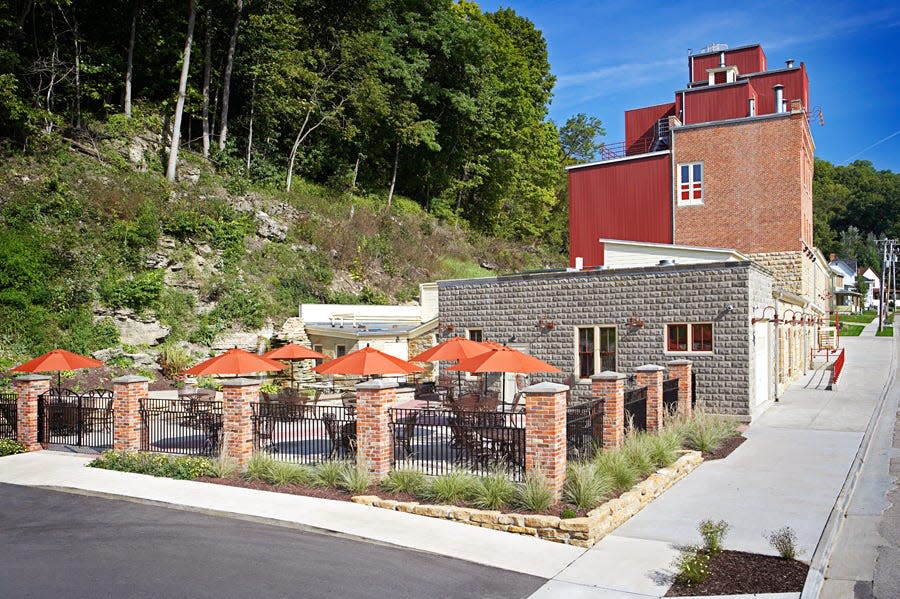This scenic drive through Wisconsin can teach you about the state's connection to the Mississippi River
You've probably heard of the Great River Road — the scenic byway that runs along the Mississippi River from Minnesota to New Orleans — and maybe you've driven along Wisconsin's 200-plus mile stretch of it.
But did you know there are more than 80 sites along the drive, known as Great River Road Interpretive Centers, that provide historic, cultural and ecological knowledge of the river and their region?
Wisconsin has seven of these interpretive centers, beginning in Prescott, about 30 minutes from the Twin Cities, and ending in Potosi, before the Illinois border. Their topics are wide-ranging and they're individually managed. But they have a shared mission: to educate and entertain the public about the region's connection to the Mississippi River, said Sherry Quamme, chairperson of the Wisconsin chapter of the Mississippi River Parkway Commission, which promotes the Great River Road.
More: The Great River Road is perfect for a great Wisconsin road trip
"So many people say, '(The Mississippi River) is on my bucket list ... I know where Prairie du Chien is, I've been to La Crosse,'" she said.
The interpretive centers can be a starting guide to explore Wisconsin's west coast. Quamme recommends charting your itinerary to see all of them. If you do, here's what to expect.
(Note that some sites are closed through the winter, and others have winter hours.)
Freedom Park, Great River Road Visitor & Learning Center
At the confluence of the Mississippi and St. Croix rivers is Prescott, home to Wisconsin's northernmost interpretive center on the Great River Road.

Freedom Park, named after a rehabilitated eagle released there in 1981, is free and open to the public every day, with walking paths along the bluff, sculptures and a playground. The visitor center, open 10 a.m. to 5 p.m. Saturday and 12 to 5 p.m. Sunday, hosts exhibits about the history and ecology of the region.
Visit: 200 Monroe St., Prescott. 715-262-0104.
Upper Mississippi River National Wildlife and Fish Refuge Visitor Center
The newest of Wisconsin's Great River Road interpretive centers — having just been approved in early December — is the Upper Mississippi River National Wildlife and Fish Refuge Visitor Center in Onalaska.
The area overlooks the shores of Lake Onalaska and includes walking paths through Brice Prairie. The center itself contains educational displays and information about the refuge, which spans 261 river miles from Minnesota to Illinois. It's open 9 a.m. to 3 p.m. Tuesday through Friday between November and March, and 9 a.m. to 3 p.m. Tuesday through Saturday the rest of the year.
Visit: N5727 County Road Z, Onalaska.
Genoa National Fish Hatchery and Great River Road Interpretive Center
The fish hatchery in Genoa, authorized under the Upper Mississippi Wildlife and Fish Act of 1924, works to recover federally endangered fish and other aquatic species, like mussels. Its interpretive center includes exhibits on the river's cultural importance to Indigenous peoples, including a lesson on the Battle of Bad Axe which occurred in the area, the history of conservation in the basin and two aquariums filled with native fish species.
More: In this western Wisconsin river, scientists see hope for saving endangered mussel species
Visitors can also tour the hatchery and walk the grounds, which include river bluffs and wetlands. During the winter months, the visitor center is open 9 a.m. to 3 p.m. weekdays and closed weekends.
Visit: S5631 State Highway 35, Genoa. 608-689-2605.
Villa Louis Interpretive Center
On Prairie du Chien's St. Feriole Island, Villa Louis stands on the banks of the Mississippi River. Built in 1871, it was home to the Dousman family, early settlers to Wisconsin's second-oldest city. Today, you can tour the mansion and the grounds, learning about what the area was like more than 100 years ago.

The site is closed October through May with the exception of special events, like their recent Victorian Home for the Holidays celebration. The 2024 season begins May 22, with tours running Wednesday through Sunday from 10 a.m. to 4 p.m. Ticket prices can be found at villalouis.wisconsinhistory.org/plan.
Visit: 521 Villa Louis Rd., Prairie du Chien. 608-326-2721.
Fort Crawford Museum
Visitors to the Fort Crawford Museum in Prairie du Chien can learn about the city's military history and the story of the fort, which guarded the area from 1816 to 1856. The site contains the fort's military hospital, which was reconstructed in the 1930s on its original foundation with original materials. It's also home to the Museum of Prairie du Chien, which hosts several exhibits about the region, including the history of clamming on the Mississippi River.
From May to October, the museum is open (except on Tuesdays) for self-guided tours at $8 a ticket for adults. Group tours can be scheduled in advance during the other half of the year.
Visit: 717 S. Beaumont Rd, Prairie du Chien. 608-326-6960.
Stonefield Historic Site
How did Wisconsin become America's Dairyland? Stonefield, located in Cassville, provides a look into the state's agricultural past. Visitors can explore the state's largest collection of farm equipment and vintage tractors at the State Agricultural Museum, see the home of Wisconsin's first governor, Nelson Dewey, and tour a village of 30 historic shops and factories.
More: A Wisconsin man saw the 'natural wonder' of the entire Mississippi River, all by bike
The site is open for tours June through September, Thursday through Sunday from 10 a.m. to 4 p.m. Tickets can be found at stonefield.wisconsinhistory.org/plan.
Visit: 12195 County Hwy. VV, Cassville. 608-725-5210.
Potosi Brewery
The southernmost interpretive center on Wisconsin's stretch of the Great River Road is Potosi Brewery in Potosi, originally founded in 1852 and re-founded on its original site in 2008. Its interpretive center and transportation museum teach visitors about area history and how transportation affected the brewing industry.

The interpretive center and transportation museum are free and open 11 a.m. to 9 p.m. Monday through Saturday and 11 a.m. to 8 p.m. Sunday. Visitors can also tour the brewery, dine at the brew pub and visit the National Brewery Museum.
Visit: 209 South Main Street, Potosi. 608-763-4002.
Have other questions about the Mississippi River? Email Madeline Heim at mheim@gannett.com. Heim is a Report for America corps reporter who writes about environmental issues in the Mississippi River watershed and across Wisconsin.
Please consider supporting journalism that informs our democracy with a tax-deductible gift to this reporting effort at jsonline.com/RFA or by check made out to The GroundTruth Project with subject line Report for America Milwaukee Journal Sentinel Campaign. Address: The GroundTruth Project, Lockbox Services, 9450 SW Gemini Dr, PMB 46837, Beaverton, Oregon 97008-7105.
This article originally appeared on Milwaukee Journal Sentinel: Is there a scenic drive along the Mississippi River in Wisconsin?

